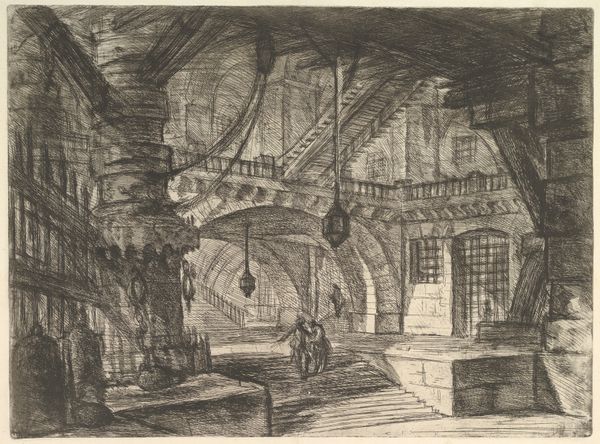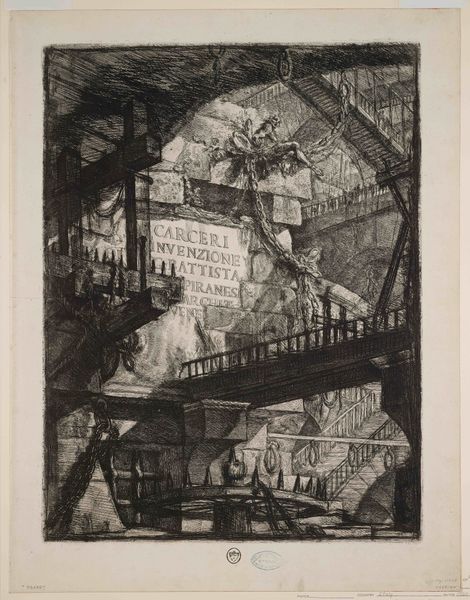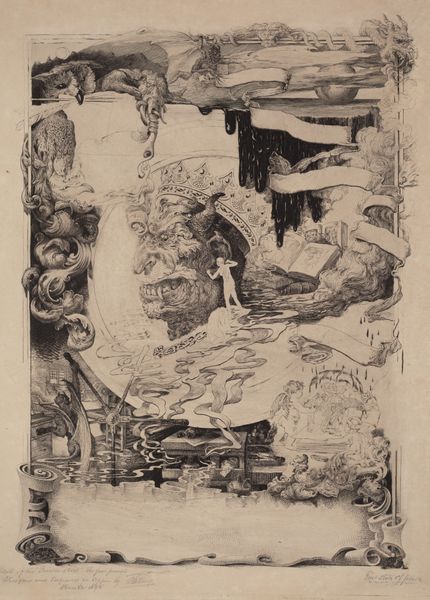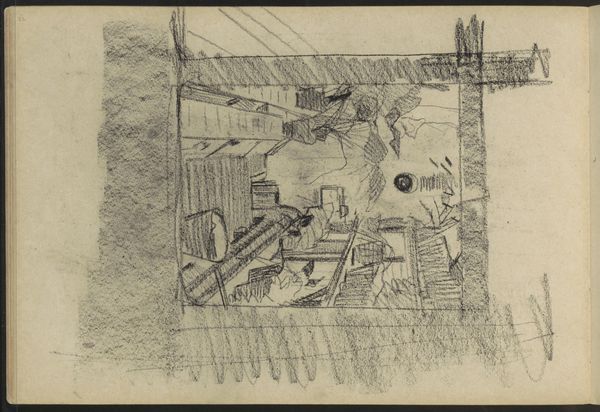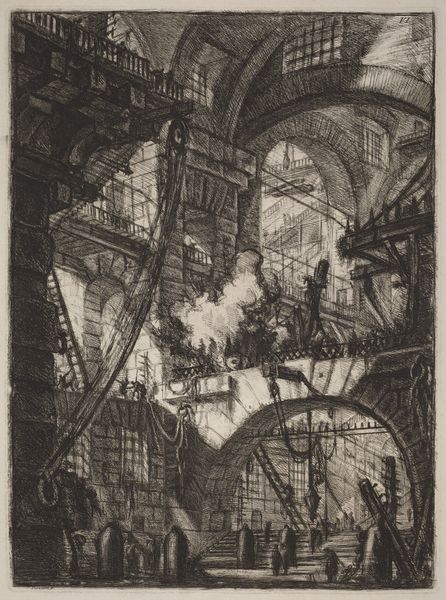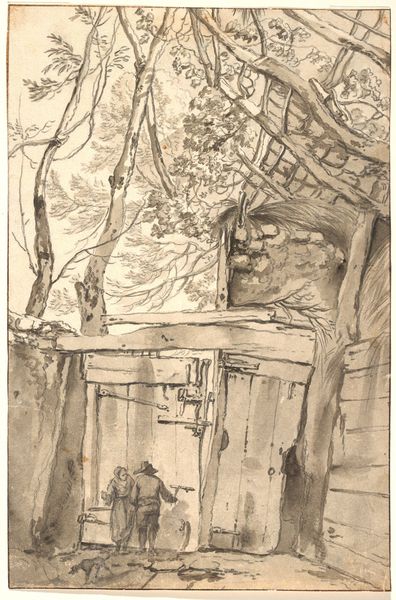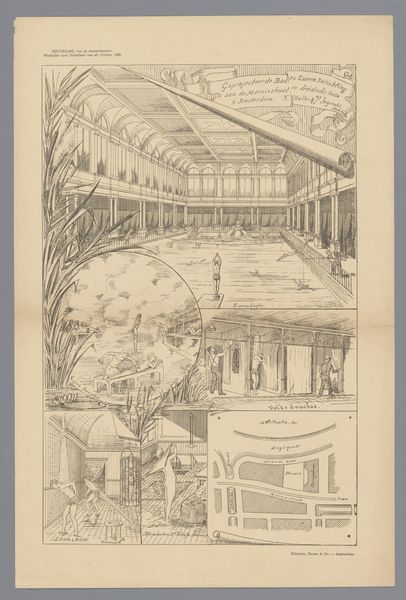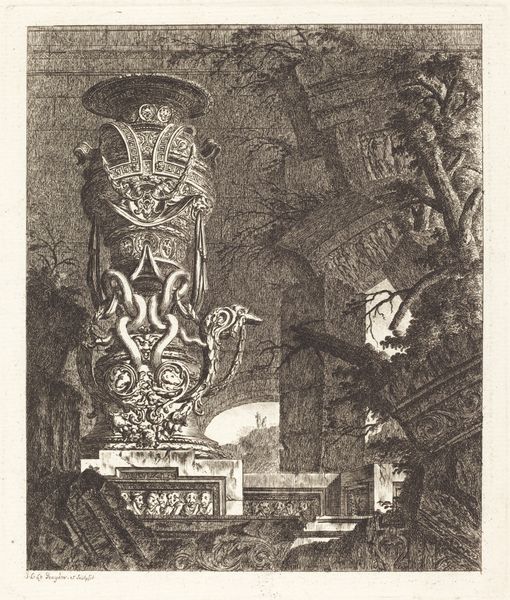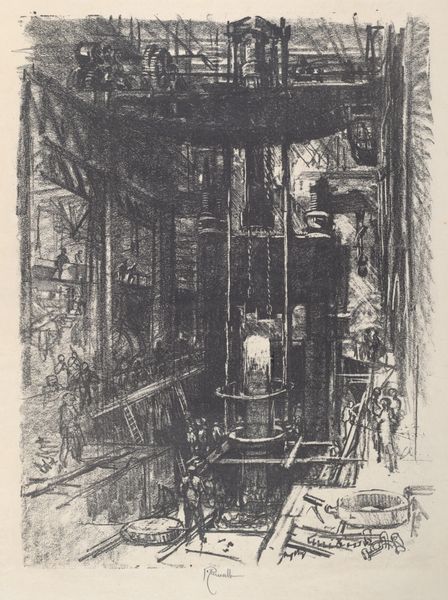
Title Page, from "Carceri d'invenzione" (Imaginary Prisons) 1744 - 1755
0:00
0:00
drawing, print, etching
#
drawing
#
baroque
# print
#
etching
#
history-painting
Dimensions: Sheet: 25 1/16 x 19 7/16 in. (63.6 x 49.4 cm) Plate: 21 1/2 x 16 5/16 in. (54.6 x 41.4 cm)
Copyright: Public Domain
Curator: Giovanni Battista Piranesi, an 18th-century Venetian artist, created this etching titled "Title Page, from \"Carceri d'invenzione\" (Imaginary Prisons)" between 1744 and 1755. It is now part of the collection at the Metropolitan Museum of Art. What strikes you about this image? Editor: Claustrophobia, right off the bat. It feels like peering into a dream...a particularly unsettling one, filled with heavy stone and impossible geometry. It makes me think about how space can imprison us, even the spaces in our minds. Curator: The Baroque era, in which Piranesi was working, often explored grandiose themes, and here, he's turning toward confinement, both physical and psychological. These weren't real prisons, but imaginary spaces—reflecting the anxiety of the time and the vast reach of power. Piranesi was quite interested in how institutions projected themselves. Editor: It is curious to imagine them, isn’t it? Makes me wonder about his own experiences and observations of power during his time. It’s like a stage set, designed not for freedom but for theatricalized control. Those chains just hanging there so carelessly...as if casually draped decoration for a child's bedroom...but so insidious in effect. Curator: These prints allowed a wide audience to engage with the physical embodiment of power, reflecting on the darker side of societal structures. Consider that Piranesi, although influenced by the grand architecture of Rome, often portrayed them in decay, or manipulated them into these kinds of phantasmagorical visions. He challenged idealized images with hints of societal rot. Editor: Right. Because otherwise we’d assume Baroque and Rome immediately equals “triumph," with sunlight always cascading in the most flattering angle. This artwork's grittiness is so wonderfully challenging, like punk rock for the 18th century. This is all such great historical context to interpret this etching, and allows its symbolism to still hold weight in our world today. Curator: Piranesi provides a space to visualize the hidden mechanisms of governance. Its effect reminds us to continually question the structures around us. Editor: Totally, that tension is so tangible. This isn’t just a beautiful object; it’s a statement, daring us to look at the world—and our own minds—differently. Thanks for offering insights into the meaning of this work.
Comments
No comments
Be the first to comment and join the conversation on the ultimate creative platform.

